Redditch New Town Archives: Heritage and the ‘Old Town’
- 26th May 2024
This is the fourth and final blog of this Redditch New Town series. In this blog we explore the work the Corporation did to spread the word of the town’s history and the work of one special charity that raised money to enhance and preserve historical sites and recreational areas for all to enjoy.
Redditch Owes it’s Existence to Bordesley Abbey
The Corporation was preparing to accommodate an influx of new residents in Redditch. The population was to increase from 29,000 already in situ in 1964 to 70,000 and increasing to 90,000 by the end of the century. Whilst existing Redditch inhabitants may have been aware of it’s rich history, it is likely many newcomers were not. A beautifully illustrated, fold-out publication by John G. Rollins explains ‘Red ditch’s’ history from the year 1136 to its needle making industry in the 1700s. The information it contains, perhaps, could not have served both new and ‘old’ residents better, since it acknowledges the historic beginning of the town and communicates activity taking place to preserve and discover more about it through excavation and study. It perhaps worked to soothe changes endured by existing residents and indicates it’s significance to newcomers. As stated in blog 3 of this Redditch series, this was a New Town with a history like no other.
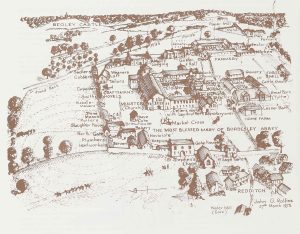
Redditch Owes its Existence to Bordesley Abbey Leaflet BA10300/787 illustration
A similar publication, published later by Redditch Development Corporation contains further information about the work of the monks, their land and archaeological digs. It states that every year since 1968 Redditch Council and the Corporation gave money for summer archaeological digs to take place.
Remains of Bordesley Abbey are situated at the northern end of Arrow Valley Park. Before the establishment of the Abbey in 1136. The whole area was covered with dense oak thickets and the valley floor was an impenetrable bog. King Stephen, Grandson of William the Conqueror, brought lifelong friend Waleran de Beaumont with him to England, Grandson of William’s Sherriff of Worcester, and son of the Justicar of England under King Henry I (King Stephen’s uncle). Due to his father’s fear of committing blasphemy, it was Waleran, that granted lands to the Cistercian Order for the founding of an Abbey at Bordesley, once he became Earl of Worcester.
When the monks and abbot arrived from Leicester, foresters had already built them lodges and they worked under instruction during the initial stages of occupation. Cistercians wore white robes, chose isolated locations, and placed emphasis on manual work, encouraging all arts and crafts of husbandry, agriculture, and industry. This set them aside from the Benedictines who were perhaps more encumbered by religious observances and lived in more more comfortable and decorated surroundings, though Cistercian Abbeys did adopt more luxurious elements from the 12th C so maybe Redditch monks did have some comforts!
Bordesley Abbey is a classic example of a Cistercian house. The monks chose a prominent position, for their initial oak chapel which was dedicated to St Stephen (Stephen the Martyr), King Stephen and another Stephen, a founding father of their Order. Cistercian churches were usually dedicated to the Virgin Mary. The first stone of the Minster was laid in 1140 and the oak chapel was eventually re-built in stone. The monks acted as supervisors, architects and engineers whereas heavy work was carried out by lay brothers who lived close by, in separate accommodation to the monks. Alongside all this building, oak and scrub was cleared from the hill sides and the marsh was drained. A mill bank was constructed west of the Abbey, across the valley giving protection from floods and water to drive the mill.
Once the monks had moved into the new minster, the chapel acted as a gate house to a village that had formed between the chapel and the mill damn. The first reference to Redditch was as Rubeo Fassetto c1192, named after the red iron oxide in a stream that ran through the village.
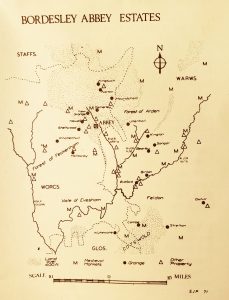
Bordesley Abbey information guide BA11883-49xiv and BA14226-35ii plan of estates
As time went on more secular buildings took shape around the Abbey Minster. The home farm buildings were south of the cloistral buildings and still further south of the forge mill range. The present Forge Mills now occupy the site. A gate house was constructed, with another smaller one giving access to Redditch proper.
The monks are credited with bringing needle making craft to the district, having dug two canals to raise the water height sufficiently to work the Forge Mill water wheels. The water supply still serves the mill today. They also brought water by underground channels to the monastic buildings, used to flush their lavatories and dug fishponds for breeding fish to eat.
Gradually the fairer weather they enjoyed declined and by 14thC it became the wettest period in history. The Black Death at this time left a period of recession and mal-administration. Many of the granges they owned were let or used to keep sheep (sheep walks). The complex drainage system because overgrown and the Abbey was in decay. Despite this, the situation improved again gradually and at the time of the Dissolution in 1538 Bordesley Abby was one of the twelve most important Cistercian Abbeys in the kingdom.
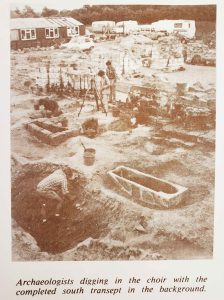
Bordesley Abbey information guide BA11883-49xiv and BA14226-35ii showing digs
At the time of Dissolution and confiscation, the township was also depopulated. Lord Windsor was made to exchange his family lands for Bordesley Abbey lands. He had to occupy the Abbots Grange at Hewell rather than the Abbey due to it’s state of disrepair. Administration in Redditch had been in the hands of the Abbot and Chapter, but passed with them into a state of limbo, unlike Bromsgrove which had it’s Court Leet.
The population of Redditch moved gradually from the old village and centered around the Abbey Grange on the high ground south of the Abbey. By 1780 Redditch Common was now the site of markets, rather than the Abbey forecourt. Permission was granted to move the Chapel to a new site on the ‘green’, though, it is said, little of the old church is in the fabric of the new church, it still carries on the traditions of the original community chapel and dedication to St. Stephen.
A plan of Bordesley Abbey Estates within the leaflet was supplied by a Stephen we know – one of our regular researchers and a Friend of WAAS!
Needle making communities emerged, congregating around the major Granges, the most important being Alcester, with needle making communities also forming in other local villages. Redditch became the centre of the needle trade, becoming known as the ‘Midland Needle Region’. When needle makers from other parts of the country became unable to compete, they joined, and it was known as the ‘English Needle Region’, the premier needle making industry in the world.
As the brochure puts it, ‘The new town of Redditch is building upon sure and tried foundations laid down by the Cistercian monks of Bordesley, long ago.’
The site of Bordesley Abbey is conserved as a museum, together with the Forge Needle Museum and Visitor Centre. The restoration of the museum came to fruition largely due to the dedication and perseverance of the Redditch Amenity Trust, see below.
Ipsley Bronze Age Timber Discovery
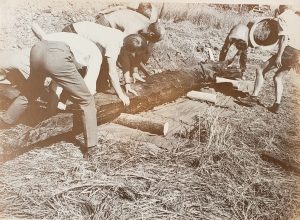
Photograph from BA16991, a recent deposit by a past RDC Planner
In 1969 a discovery was made 5 feet below ground, close to the river Arrow, as workmen dug trenches for the main sewer of the New Town. The object found became known as the ‘Ipsley Log Boat’. It was about 25 feet long, and 18 inches wide, with a bowed cross section shaped like a ‘D’. Great excitement ensued, with several newspaper articles being written. One article reports it was found under a layer of silt (alluvial gravel), the mud at the bottom of the lake and swampland later drained by the Cistercian monks. It’s primitive design was initially thought to be of a post Mesolithic (middle stone aged) period, since the wood was cut, but pre Roman, and therefore possibly the only Mesolithic boat found in Britain. The Redditch Development Corporation Registry requested a new file be started especially for the find. The file, tough slim, contains correspondence from museum and archaeology specialists providing their expertise to the Corporation.
Within the file at BA10300/269(ii) a letter by the Chairman of the Antiquities Advisory Panel dated 10th Dec 1969 explains the wood sample sent to the Department of Geology at the University of Birmingham yielded a radio carbon date of 760BC, plus or minus 80 years. No positive decision was made as to whether the object was a boat. The radio carbon date placed the object in the Bronze Age. At the time, other boats of that period were known in Britain, most commonly a dug-out type, but also three larger vessels, some 30 feet long, found in the North Ferriby Huber Estuary. These larger boats were made from planks sewn together with hide and caulked together with moss and wood resin. It was suggested the Ipsley object could have been an outrigger or stabilising float for such a vessel. Conserving the object was deemed expensive and difficult given it’s size. Recommendations were to dry the object in sand. A sample had also been requested by the Institute of Archaeology in London for dendrochronology, as it could be an important addition to the study and dating methods of pre-historic tree rings. The file also mentions a second progress report on the Archaeology of Redditch New Town was written.
Redditch Amenity Trust
A Redditch Amenity Trust brochure printed 15 years after Redditch was designated a new town, was created with the purpose of raising enough money to put into action proposals for amenities such as creating the Arrow Valley Park in the centre of the town, in co-operation with the District Council and Corporation.
It includes a list of initial donor trustees mainly consisting of Directors of local businesses (Hymatic Engineering Needle Industries Group, Aero Needles Group an Chloride Alcad) and ex-officio trustees from the Corporation and District Council. The Corporation’s spending was focused on new homes, factories and roads. The trust was set up by local businessmen and industrialists to help raise money, initially £500,000, to fund recreational, sport and cultural amenities for the then-64,000 and ever-increasing inhabitants.
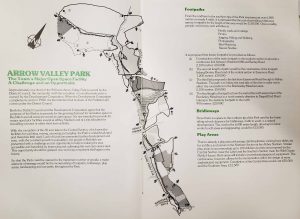
009:12 BA14226/35/20
The Forge Mill, ancient monument section gives details of its history, first being used in 1730, and the only surviving water driven needle mill in the world containing original machinery. It’s position next to the remains of the Cistercian Abbey making it an ideal tourist destination for tourists and locals. Money raised by the Trust was to aid development and restoration work of museum to include three floors of exhibits and open air exhibits. The money would also increase opening hours and promote the attraction. Funds were also to be directed into continual investigation, conservation and display of the site of Bordesley Abbey.
Arrow Valley Park is noted in the brochure as being underdeveloped, aside from the 30 acres lake used for yachting, rowing, canoeing and angling, due to lack of funds. The brochure gives a figure of £150,000 to provide continuous paths stretching the 4 mile long park, but the paths would encourage jogging, walking, family days out, photographers, bird watching and nature studies. It gives further figures for laying of bridleways, play areas, landscaping and carparks.
Exactly how much money was raised, we have not discovered and there are many records we have yet to check through as part of our project retro-conversion work. What we do know is that Arrow Valley Park is now a place for all to enjoy and it is thanks, at least initially to the Redditch Amenity Trust.
You can find more information about the New Jerusalems project at:
New Jerusalems: Unlocking New Town Archives (@new.jerusalems) • Instagram photos and videos
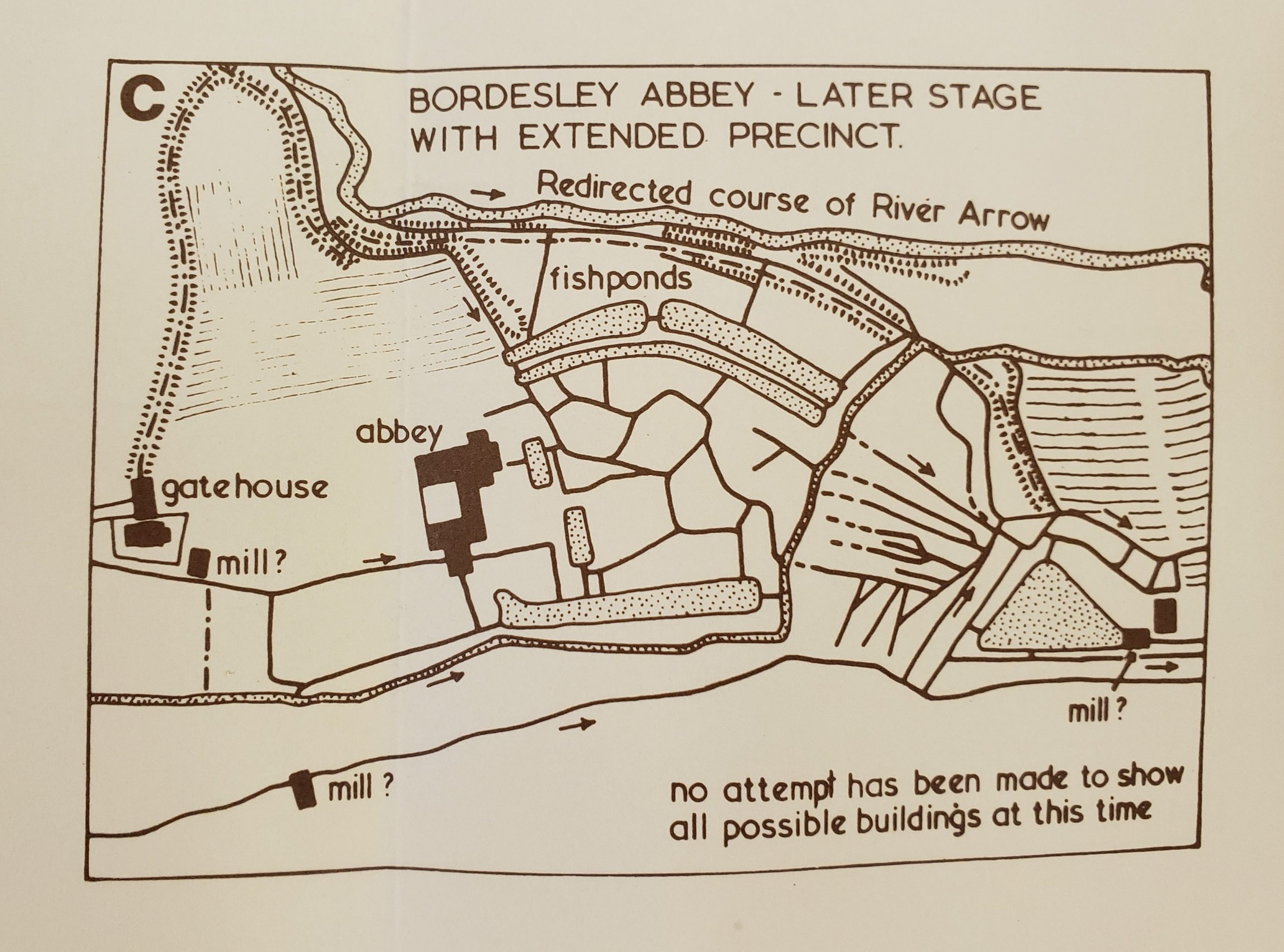
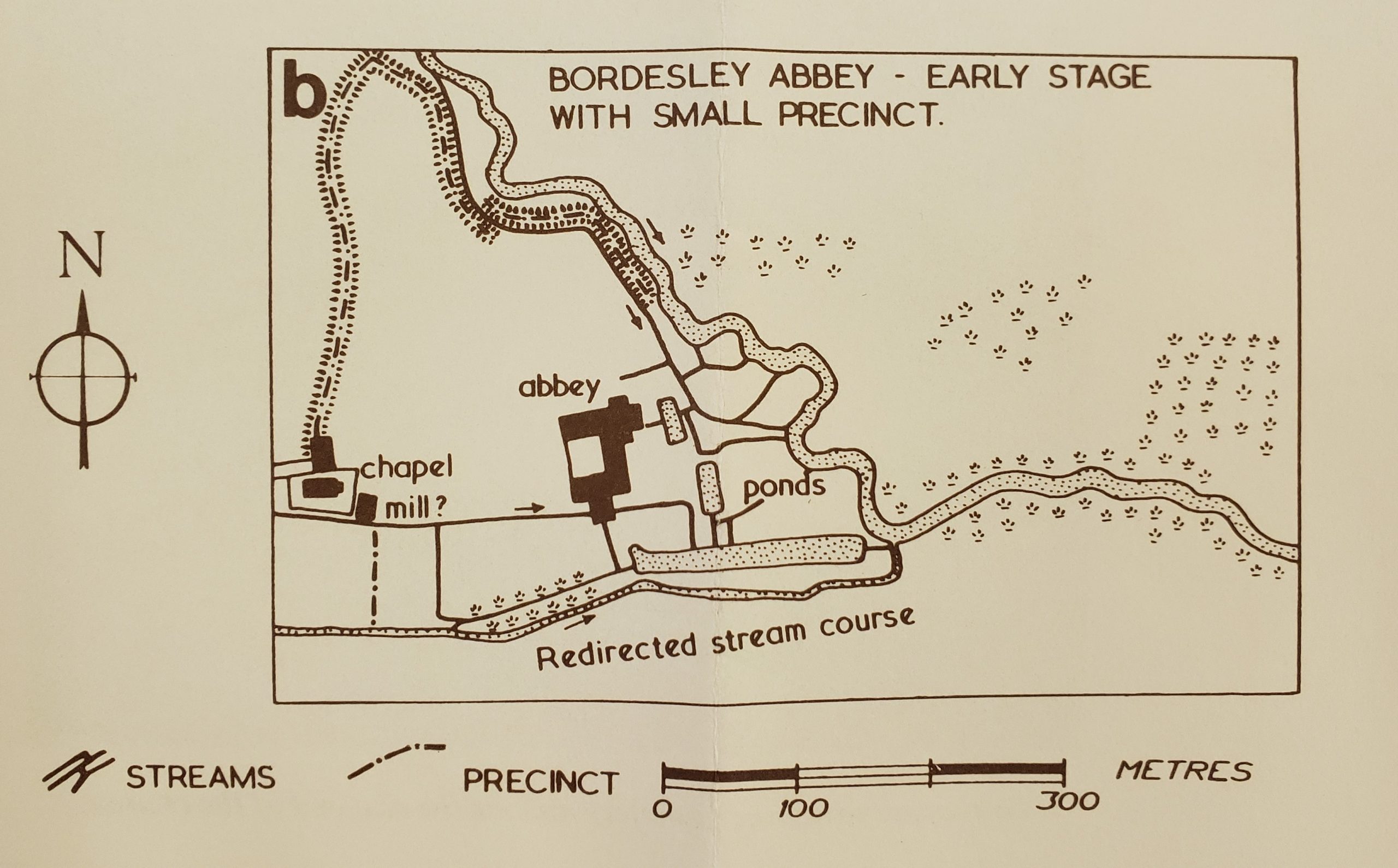
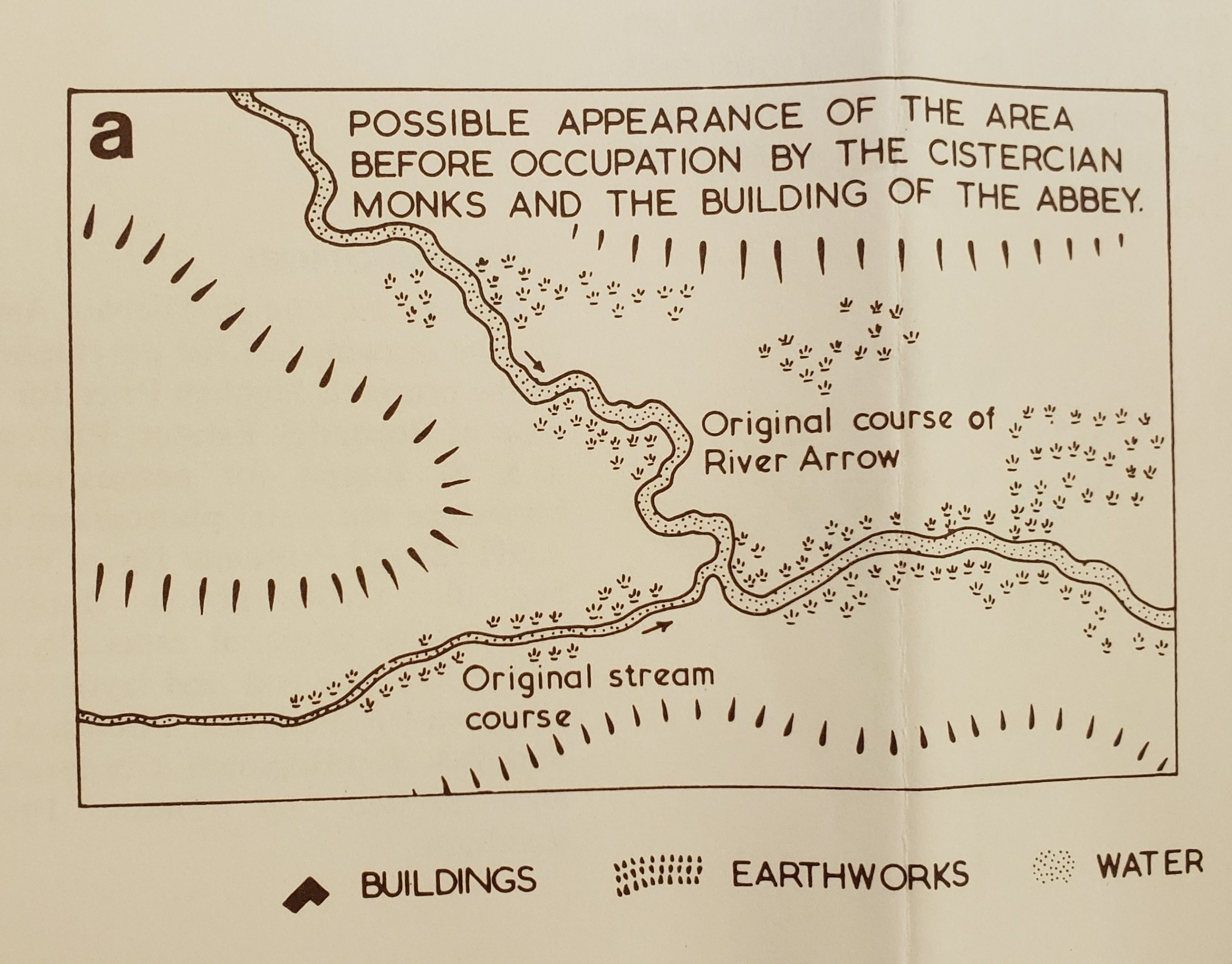
Post a Comment